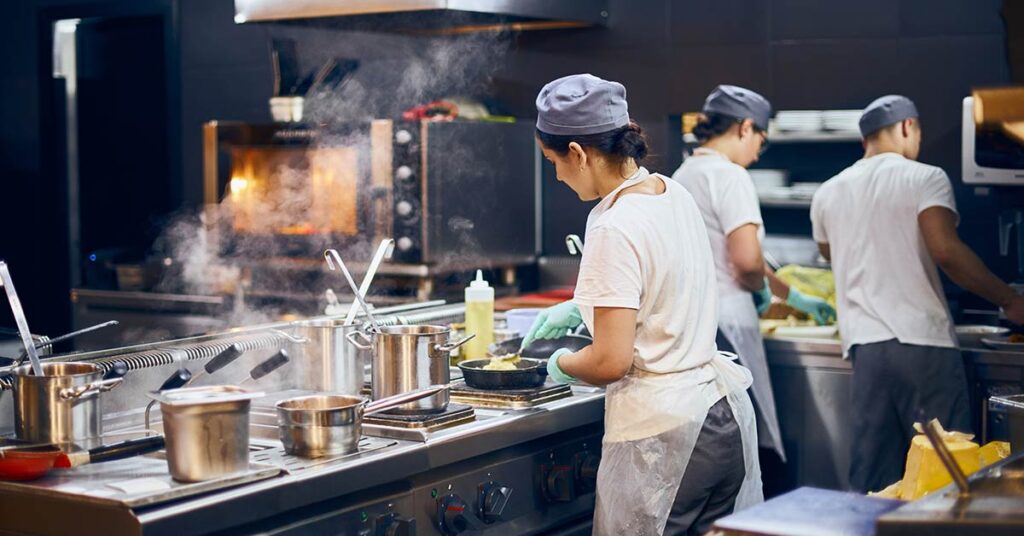Ghost kitchens and virtual restaurants are delivery-only food establishments that have become increasingly popular due to the pandemic’s impact on the food industry. Ghost kitchens operate from a non-brick-and-mortar location, have lower overhead costs and focus on food quality and production for delivery. Virtual restaurants operate online through existing restaurants or ghost kitchens and rely on third-party delivery services. Both concepts offer low-cost ways for aspiring entrepreneurs and established restaurants to enter or expand in the food industry. The future of the food industry is expected to see more innovations like these, making dining out more convenient and enjoyable for consumers.
The Growing Popularity of Ghost Kitchens and Virtual Restaurants
Introduction
Gone are the days when dining out meant dressing up and going to a fancy restaurant. With the advent of technology, the food industry is changing rapidly. One such trend that has taken the industry by storm is the emergence of ghost kitchens and virtual restaurants. In this article, we will explore what these concepts are and why they have become so popular.
Ghost Kitchens: Explained
Ghost kitchens, also known as dark kitchens, virtual kitchens, or cloud kitchens, are delivery-only restaurants that operate from a non-brick-and-mortar location. These kitchens do not have a physical storefront, and customers can only order their food from them through online platforms like Grubhub, Uber Eats, or DoorDash. Ghost kitchens typically have no dining area, staff, or front-of-house operations, which means they have significantly lower overhead costs and can focus more on food quality and production.
The Rise of Ghost Kitchens
With the pandemic shutting down dine-in restaurants and forcing people to stay indoors, the demand for delivery and takeout meals has skyrocketed. Ghost kitchens are a great alternative for both established and aspiring chefs who want to capitalize on the delivery boom without investing in a full-fledged restaurant. As a result, numerous ghost kitchens have sprung up across the country, serving a wide variety of cuisines.
Virtual Restaurants: How Do They Work?
Virtual restaurants, on the other hand, are online-only food establishments that operate through existing brick-and-mortar restaurants or ghost kitchens. These virtual restaurants typically have a website or a social media page where customers can place food orders. Unlike traditional restaurants, virtual restaurants do not have a physical location and are not meant for dine-in or pick-up orders. Instead, they rely on third-party delivery services to deliver meals to customers.
Why Are Virtual Restaurants Gaining Popularity?
Apart from offering aspiring entrepreneurs a low-cost way to enter the food industry, virtual restaurants are also catching on because they allow established restaurants to expand their offerings without incurring additional overhead costs. Virtual restaurants enable existing restaurants to utilize their existing resources, such as staff and kitchen equipment, more efficiently. They can create a virtual brand or concept that appeals to a particular audience and test it out without significant investment. If the response is overwhelming, they can always launch it as a standalone concept later on.
The Future of Ghost Kitchens and Virtual Restaurants
The emergence of ghost kitchens and virtual restaurants represents a shift towards a more digitized and efficient food industry. As the demand for delivery and takeout meals continues to grow, we can expect to see more and more ghost kitchens popping up. We can also anticipate established restaurants to utilize ghost kitchens and virtual restaurants to diversify their offerings and cater to new demographics. The future of the food industry is definitely exciting.
Conclusion
Ghost kitchens and virtual restaurants are disrupting the food industry in a big way. By removing the need for a brick-and-mortar restaurant, these concepts allow aspiring entrepreneurs and established businesses to enter the food industry with lower investment, greater flexibility, and improved efficiency. As the food industry continues to evolve, we can expect to see more innovations like these that make dining out a lot more convenient and enjoyable for consumers.
